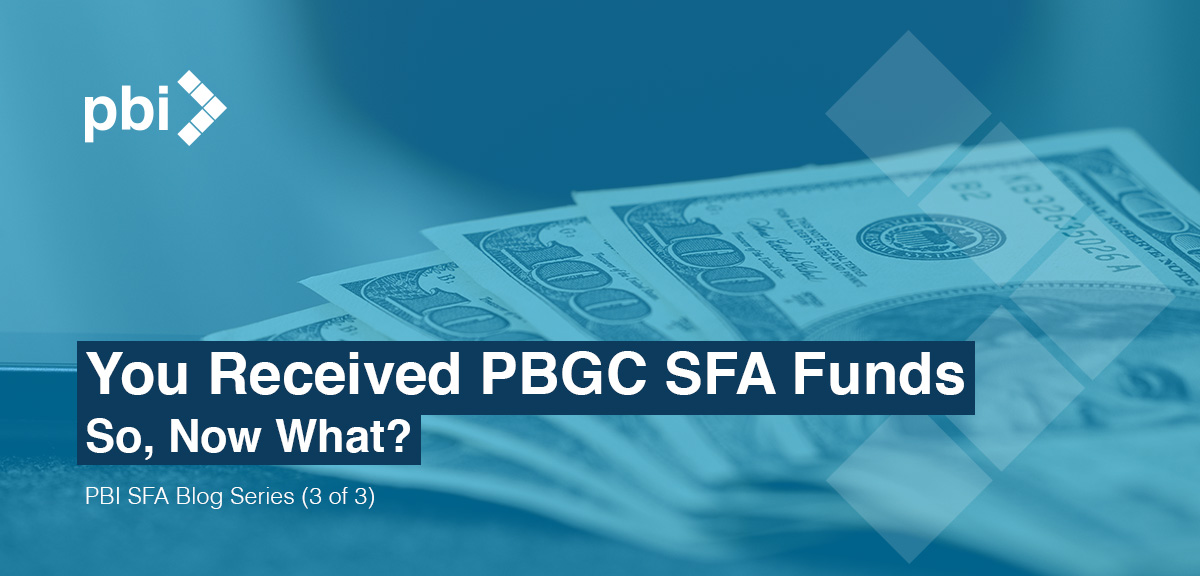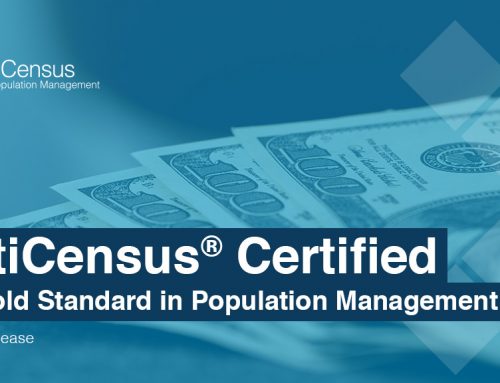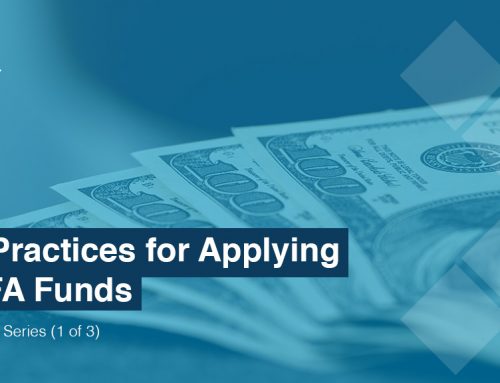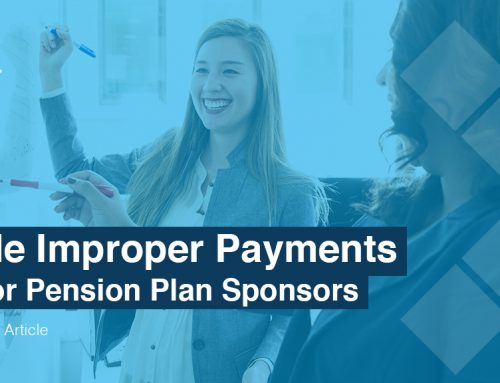You have conducted your Death Audit based on the PBGC guidelines. You have gone through the SFA application checklist, and you finally receive an approval notice from the PBGC for your requested SFA funds. Now what?
Although the PBGC does not expect SFA fund recipients to repay the awarded cash, these funds come with a catch. There are several terms and conditions that apply to awarded SFA funds. Many of these can be found in the PBGC’s final rule. PBI assembled a panel of industry experts to interpret these stipulations and what they mean for plan sponsors.
There are several restrictions on what plan sponsors can do with SFA funds
The first step will be for the plan sponsor to create a separate account to hold the awarded SFA funds. SFA funds are required to be separated from exiting assets.
Plan sponsors must decide whether to pay out their participant benefits from awarded SFA funds or existing assets. There are PBGC restrictions that make this decision simple. For SFA funds, only 33% of the awarded cash can be funneled into return-seeking investments. The remaining 67% is restricted to high-quality fixed-income investments.
Josh Shapiro a Senior Actuary at Groom Law firm commented that: “those restrictions on how SFA money may be invested give plan sponsors a pretty powerful incentive to pay benefits out of that pool of funds because their existing assets have no restrictions, and they can invest those assets however they think is appropriate.”
Ellen Kleinstuber, Chief Actuary and Principal at Bolton mentions “the SFA money cannot be used for high yield, fallen angel, private placement and convertible bonds, in addition to collateralized loan obligations and interestingly, annuity purchases.”
Common strategies for utilizing the funds
The utilization of SFA cash will undoubtedly vary from fund to fund. As mentioned above, plan sponsors will lean towards using SFA funds to pay out participant benefits versus using the fund’s existing assets. Ellen Kleinstuber offers the idea that plan sponsors could draw cash out from the return-seeking investments and then use the true fixed income portion of it to duration match or create a ladder bond portfolio where they would immunize the plan – “Maybe you say for the next 10 years I’m going to make sure I’ve got all my benefit payments covered and then as the dividends come back in you use those to pay your benefits. That could allow for taking a little bit more of an aggressive approach with the portion of the SFA money that is in return seeking investments and the existing non-SFA assets.”
Plan sponsors can also utilize mutual funds, exchange traded funds or collective trusts, and do more of a duration matching approach rather than trying to match the cash flow.
Reporting requirements
The PBGC’s final rule states that SFA recipients must file an annual statement of compliance. The first statement of compliance must be filed no later than 90 days after the year that the plan first received SFA funds. A plan can defer this report to the next plan year if six months or fewer remain in its plan year after the month in which the plan first received SFA funds. In addition to the annual compliance statement, the PBGC also holds the right to perform a compliance audit at any time of a SFA awarded fund.
Collaboration is key
Regardless of your SFA fund strategy, it is important to get key stakeholders involved early. There is a lot of work that SFA recipients will have to do with their actuaries, lawyers, and investment advisors to find the optimal utilization approach for their awarded funds.
For PBI’s full discussion around SFA funding and utilization you can view our webinar here.
—————————————–
Contributors:
Ellen Kleinstuber, Principal & Chief Actuary, Bolton, has more than 30 years of experience delivering comprehensive employee benefit plan consulting, actuarial and plan administration services to a wide variety of plan sponsors, including publicly traded and privately held companies, multinational corporations, not-for-profit organizations and governmental entities. She is a nationally recognized expert in ERISA compliance and actuarial consulting, actuarial professionalism and trends in retirement plan design and the market forces affecting them.
Jim Nolan, Vice President & Actuary, Segal, oversees the work of other analysts, provides insight into
funding regulations and withdrawal liability requirements and assists in the development of funding strategies for various clients. During his tenure at Segal, Jim has gained a great deal of experience calculating and valuating funding requirements governed by ERISA, pricing benefit improvements, performing asset liability modeling studies, reviewing demographic experience and developing funding
strategies for multiemployer pension plans.
Josh Shapiro, Senior Actuarial Advisor, Groom Law Group, focuses on the design, funding and administration of multiemployer, single-employer and governmental retirement plans. He has worked with a wide range of organizations to ensure that their retirement programs meet their financial and human resources objectives while complying with the applicable laws and IRS, Pension Benefit Guaranty Corporation (PBGC) and Department of Labor regulations.
Brigen Winters, Principal, Chair Policy Practice, Groom Law Group, counsels employers, plan administrators, financial institutions, insurers, trade associations, and coalitions on retirement, health and welfare, tax, executive compensation, regulatory, and legislative matters. Brigen helps clients achieve compliance and obtain favorable outcomes through amendments from Congress and regulatory guidance from the IRS and Departments of Treasury, Labor, and Health and Human Services. He counsels clients on all aspects of tax-qualified and individual retirement plans, including plan design and administration, tax and ERISA, and pension plan funding issues.






